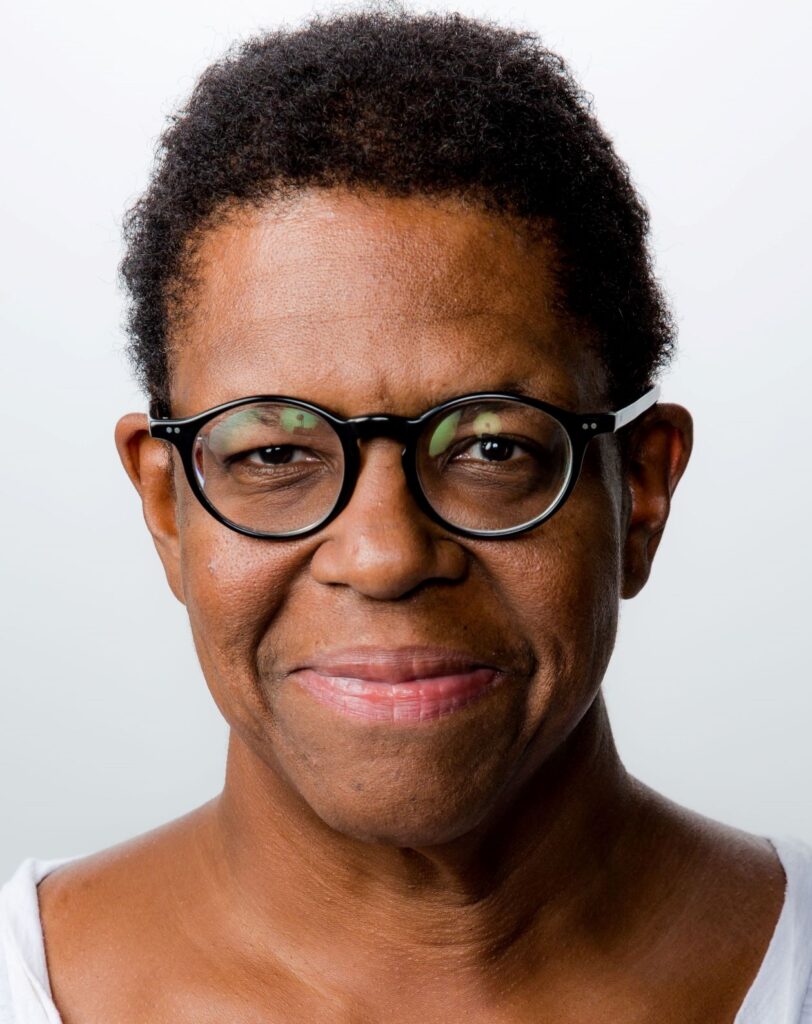
There’s a bit of attention being given to residential rehabilitation in Scotland at the moment – something that’s good to see. A working group that I was part of has made recommendations to the Scottish Government which have been broadly welcomed. It’s good to hear that the Public Health Minister, Joe Fitzpatrick, has pledged £90,000 to support implementation.
So, what are the principles the working group developed as a result of the work we undertook? There are nine of them.
- There should be access to residential treatment on an equitable basis across Scotland.
- There should be a clear understanding of need, demand and capacity.
- Funding models for residential treatment need to ensure value for money.
- A standardised approach to support good practice should be developed.
- Referral pathways should be clear, consistent and easy to navigate.
- The approach to providing residential treatment should be underpinned by the evidence.
- The diversity of models needs to be understood.
- The work of improving access to residential treatment should support the work of the Drugs Deaths Task Force.
- Outcomes from residential treatment should be measured, published and monitored.
The reason for each of these statements relates to us either finding evidence of a problem or a gap in our knowledge. We did find much to celebrate too, but it’s developing the areas which need attention that will make things better.
Under each of these principles are specific recommendations which I’ll come back to. For now, it’s clear that we’ve got a bit of work to do, but I’m glad to say that there is a willingness to get it done. A bit of momentum is building which I hope will lead to a better understanding and acceptance of the value of residential rehabilitation and which will make it much more accessible to those who would benefit from it.
A summary of the report can be found here.
 Family gatherings, year-end celebrations, seasonal stress: there are lots of opportunities and reasons to drink—and drink heavily —over the holidays. Yet, with a little planning, you can deal with these triggers and urges from a place of personal power. Consider these five helpful tips to successfully deal with urges and stay sober this holiday season. 1. Identify Your Triggers […]
Family gatherings, year-end celebrations, seasonal stress: there are lots of opportunities and reasons to drink—and drink heavily —over the holidays. Yet, with a little planning, you can deal with these triggers and urges from a place of personal power. Consider these five helpful tips to successfully deal with urges and stay sober this holiday season. 1. Identify Your Triggers […]
A Sober Mommies Contributor is most often a non-professional – in and out of recovery – with reality-based experience to share about motherhood & active addiction, the multiple pathways to recovery, or a family member’s perspective.

For a significant number of people in recovery, rehab has been part of their journey, yet the truth is that we know very little about residential rehabilitation in Scotland.
In the summer of 2020, the Scottish Government public health minister, Joe Fitzpatrick, set up a working group to explore the subject. I was asked to chair the group. We were tasked to take a look at provision; location of rehabs; bed numbers; programme types and duration; referral criteria and support; waiting times; staffing; costs; involvement of families; regulatory frameworks; outcomes; relationship to mutual aid and community recovery resources and finally, admissions and discharges.
How did we do it?
- We explored the evidence
- We developed a mapping tool
- We surveyed the field
- We reviewed Alcohol & Drug Partnership reports
- We discussed the findings
- Finally we made recommendations
What did we find?
We found 18 treatment centres with 365 beds across the country. We estimated that just under 5% of total treatment starts in Scotland in 2019-20 were for residential treatment. This compares to an average (in a 2014 EMCDDA report) of 11% of all treatment in Europe, and 2% of treatment episodes in England.
Across these facilities, around half (48%) of the beds/places were provided by third sector organisations, around a third (33%) by private companies, and a small minority (6%) by statutory providers.
It is estimated that a total of around 1340 individuals started a residential rehabilitation placement 2019-20, with around 830 of these individuals estimated to have been resident in Scotland prior to their placement. There are some caveats around this which we detail in the report.
Access and treatment elements
We found that access across Scotland is not even. The group heard evidence of areas where there was little or no access in practice, with the only option locally being self-funding.
Seventy percent of providers said they used the therapeutic community approach – an evidence-based treatment model. The majority of services offer cognitive behavioural therapy and motivational interviewing. All provided aftercare and assertive linkage to mutual aid. There were high levels of linkage to community recovery resources.
Two thirds of those responding said they offered family support and many reported integrated peer support. All reported measuring short-term outcomes. Completion rates varied, but were generally good.
Pathways and funding
From our analysis of the thirteen services for which data were available. Alcohol and Drug Partnerships fund only a small proportion of treatment places with the bulk being self-funded or funded through health insurance, benefits or charity.
We also found that pathways to rehab are confusing with a variety of potential barriers in the way and wide geographical variations in referral rates. It’s apparent for many seeking recovery that routes to rehab are not easy to navigate. Indeed it became clear to us that there were lots of unanswered questions. Part of the reason for this is the dire lack of research on rehab (and recovery) in Scotland.
It did seem to us that although we found much to celebrate, we also found that there is work we need to do. That work forms the basis of our recommendations to the Scottish Government. I’ll come back to that in a further blog post.
Joe Fitzpatrick, the minister for public health, said:
I welcome the findings of the group. This research will help us to improve the provision and quality of residential rehabilitation services
Meantime you can find the published report on the Scottish Government website.
I’d like to thank the members of the working group and everyone else who contributed. Thanks also to Nick, Ruth, David and Anniek from SG for their support, advice and hard work.
 Stacey McKeever is a librarian in southern California. Her lifelong struggle with food addiction has led her to use SMART Recovery as one pathway to maintaining balance in her life. In this podcast, Stacey talks about: How she was a librarian even before she earned her degree Being put on diet pills at eight years […]
Stacey McKeever is a librarian in southern California. Her lifelong struggle with food addiction has led her to use SMART Recovery as one pathway to maintaining balance in her life. In this podcast, Stacey talks about: How she was a librarian even before she earned her degree Being put on diet pills at eight years […]

Public Health England (PHE) recently published their summary of what’s going on in substance use disorder treatment in England over 2019-20. Despite the shared culture and proximity of Scotland and England, there’s been a significant divergence in drug and alcohol policy and treatment delivery over the years.
We’ve not been good as we might have been in Scotland at capturing the detail and outcomes of treatment episodes across both drug and alcohol interventions, though that’s about to improve with the introduction of a new monitoring system here.
We still have a strong network of addiction specialists working in the NHS in Scotland while this seems to have been eroded in England and many commentators have highlighted reduced funding south of the border. Having said that, comparisons are difficult and of course we have a much higher drug-related death rate in Scotland.
So, what’s going on in England? The numbers entering treatment are pretty steady compared to last year, at over 132,000, more than half for opiate use disorder. There was evidence over time of a stabilisation of the numbers of people entering treatment after past falls. Sadly, there was a 6% increase in deaths of opiate users in treatment since the previous year. Overall, the number of people in treatment totalled over 270,000.
After opioids, the next biggest group was those seeking help for alcohol use disorder (28%). People seeking help for cocaine (powder and crack) was up, which continues a trend, with crack problem presentations increasing much faster than powder cocaine. Problematic ketamine use seems to be up too, increasing 19% in a year, though the numbers are still small.
Something positive
Of the 118,000 people who left treatment, it is reported that almost half left ‘having successfully completed their treatment, free from dependence’. That suggests that a lot of people met their treatment goals and is encouraging.
Something interesting
Here’s something interesting – 58% of those starting treatment were smokers. That’s much lower than I expected, though still about three to four times the rate in the general population. Sadly, given that 50% of smokers will die of causes relating to that addiction, only 3% were offered interventions to quit.
Something disappointing
According to the European Monitoring Centre for Drugs and Drug Addiction’s 2014 report on Residential Treatment, 11% of total treatment episodes on average across 20 European countries are for residential treatment. In Scotland in 2019-20, we estimate it was roughly 4-5% percent. In England, according to PHE it is 2%. This is down 41% over five years.
Something alarming
Of those clients/patients leaving treatment, a third of patients left without completing. For those in the opiate group who left, almost three quarters left without successful completion, which is alarming given the risks around relapse.
For comparison, 59% of the alcohol-only group successfully completed. It would be good to understand what factors are influencing the high drop out rate and what we need to do to get better at holding on to people in the treatment system.
Something missing
On page 37 of the UK Government’s 2017 Drug Strategy there is a commitment:
We will support local partners to measure outcomes from key processes which promote recovery, including: the proportion of clients facilitated to access mutual aid or peer support.
UK Government
This is great, as is the PHE toolkit on mutual aid. Connecting to mutual aid is consistently associated with improved outcomes. I’d love to see a similar commitment in Scotland.
I was looking to see how many of the new treatment episodes captured this statistic – the proportion of clients who got plugged in to mutual aid. I couldn’t find a single mention of mutual aid or peer support in the report. That’s something missing which could also be used as a proxy measure of quality for services.
Something reflective
As I’ve been writing I’ve challenged myself on my own practice in each of these areas and I’ve thought about what these statistics might have to teach us in Scotland. I’d like us to do better here too with retention in treatment, smoking cessation, connection to mutual aid/peer support and better access to residential rehab.
I hope you’ll agree, there’s not too much to argue with there.
Photo credit: istockphoto.com/Zmaj88 (under license)

December 3, 2020
A central goal of public recovery self-disclosure is to challenge myths and misconceptions about addiction and recovery through the elements of our personal stories. Recovery advocates must avoid contributing to false narratives by having selective parts of our stories appropriated while ignoring the central recovery message.
Addiction/treatment/recovery-related social stigma and its untoward consequences rests on old and new misconceptions regarding the sources and solutions to alcohol and other drug problems. Such key pillars of belief about the nature of addiction, addiction treatment, and addiction recovery constitute the structural supports of addiction-related social stigma. Below are examples of such pillars (in the stigmatized language in which they have been historically conveyed) and how our stories can be hijacked to support these false narratives
Addiction is a product of moral turpitude (badness) that is best prevented and discouraged by public shaming and other forms of punishment. Acts flowing from this premise began with American colonies forcing those convicted of public intoxication to wear the letter D (for “Drunkard”) on their clothing or to be set in stock in the town square under a sign reading “Drunkard.” The moral turpitude pillar continues to feed social shunning, serves as grounds for divorce, and provides a rationale for political disenfranchisement and discrimination in housing, employment, education, and medical benefits. Overemphasizing or exaggerating the “bad people” we were in the addiction portion of our stories inadvertently feeds this view.
Addicts pass on their degeneracy (“bad seed”) to their children. This pillar of belief has resulted in the inclusion of addicted people in mandatory sterilization laws, surgical sterilization without consent during institutionalization, and loss of parental custody and related legal rights. It also feeds false narratives that paint the children of addicted parents with the same brush, e.g., false narratives of “crack babies” as a “biological underclass.”
The addict is an infectious agent who must be closely surveilled and isolated from the community. This pillar of belief provided the rationale for inebriate penal colonies, prolonged institutionalization in psychiatric asylums, prolonged surveillance (addict registries, prolonged probation/parole), and fed the modern era of mass incarceration.
Addicts pose the greatest threat to the community when they associate with each other. This belief undergirded laws banning addict fraternization and probation or parole violations for associating with other addicts. “Loitering addict” laws provided for the arrest of known addicts for simply being in the presence of other individuals identified as addicts. Policies that dissuade recovery networking and the inclusion of recovery voices in matters that affect us may well be rooted in earlier biases against addicts being with each other.
Addiction does not discriminate. Actually, it does! It was with the purest of intentions that the tagline of “addiction does not discriminate” became one of the public education mantras in the wake of the “opioid epidemic.” It was a way of saying, “See…it could happen to anyone… and now you should care.” This narrative sought to normalize (AKA Whiten) addiction by projecting the image of “innocent,” (AKA White), middle-class children and their parents deserving of public resources to support their care. Such care was advocated as an alternative to arrest and incarceration for the “deserving” (AKA White people of means), while addiction in communities of color continued to be stigmatized, de-medicalized, and criminalized.
Stating that alcohol and other drug problems cross boundaries of race and class in the United States obscures the inordinate toll addiction and drug policies have long taken and continues to take on communities of color and other historically marginalized populations. The addiction vulnerability of these communities stems from historical trauma; social, economic, and political marginalization; and related disparities in access to prevention, harm reduction, early intervention, treatment, and recovery support services. An ethical framework of public messaging and education would call for equity of policy application and resource allocation across all affected communities. Ideally, recovery storytelling would include the stories of people from diverse backgrounds and living circumstances. It is important that through our stories we convey the reality of recovery, the varieties of recovery experience, and the challenges of recovery across cultural contexts.
Addiction is untreatable (“Once a junkie, always a junkie.”) This pillar of belief feeds personal, public, and professional pessimism about addiction and provides the rational for prolonged institutionalization /incarceration as well as justification for harmful and potentially lethal treatment experiments. In the U.S., the latter have included brain surgeries, indiscriminate use of chemo- and electroconvulsive therapies, toxic drug withdrawal procedures, and other harmful treatment methods. Portraying the role treatment played within our recovery stories and the nature and positive effects of modern treatment challenges this misconception.
Treatment Works! is a counter misconception in that it suggests the presence of a uniform protocol of addiction treatment in the U.S. that achieves consistently positive clinical outcomes. It also ignores widespread addiction treatments that lack empirical evidence of their effectiveness as well as the presence of treatments more focused on financial profit than long-term recovery outcomes. This central marketing slogan of the treatment industry misrepresents the highly variable outcomes of addiction treatment, which span minimal, moderate, and optimal effects, as well as harmful effects. Addiction is a treatable condition, but recovery outcomes depend upon numerous personal, clinical, and environmental factors. Great care must be taken in how our stories are used by the addiction treatment industry. What we are offering as advocates is living proof of long-term recovery, not an advertisement for a particular proprietary approach to addiction treatment. (See HERE for full critique of this slogan.)
Recovery is not possible until an addicted individual “hits bottom.” Actually, most people recover from addiction long before “hitting bottom” (losing everything). Addiction-related loss and pain in the absence of hope is an invitation for continued self-destruction. Recovery initiation is the fruit of addiction-related consequences interacting with sources of hope for a healthier and more meaningful life. The “hit bottom” premise suggests that recovery responsibility rests solely with the individual—that there is little family or community can do until that point of individual awakening arrives. This constitutes an invitation for family and community abandonment of those suffering from addiction. This premise is untrue, is not applied to other medical conditions, and should be forever discarded within the addictions arena. We must not let our story be twisted to support this supposition even if we were one of those who did hit bottom and lost everything.
Addiction recovery is the exception to the rule. Actually, recovery is the norm; individuals who do not achieve sustainable recovery are the exceptions. Those who struggle with recovery stability are distinguished by higher problem severity, co-occurring problems that make recovery initiation and recovery more difficult, and fewer natural recovery supports in the community. Even people with the most severe addiction problems can and do recover with more intense and prolonged recovery support resources. We must repel any effort to cast our recovery as the heroic “exception to the rule” and convey the consistent message that no one need die of addiction. Recovery is far more than possible; it is the probable long-term outcome for those who experience alcohol- and other drug-related problems.
Addiction recovery is a brief episode that allows one to then get on with their life. For people with mild to moderate levels of addiction severity who possess substantial recovery capital, recovery may be just that. However, for those escaping addictions marked by severity, complexity, and chronicity, recovery is a prolonged process comparable to the assertive and sustained management needed for other chronic medical conditions. It is important in our stories to acknowledge variability of addiction severity and recovery support resources. Our recovery story is just that—our personal story; it is not the whole addiction/recovery story.
Media channels frequently tell the story of addiction recovery only as a personal story rather than a larger story of the role of family and community in addiction and recovery. The prevalence and severity of addiction are profoundly influenced by social, economic, and political contexts. The recovery tipping point has as much to do with family and community resources and capacity for resource mobilization as it does what is going on inside the addicted person. We serve best when we present our journey from addiction to recovery within these larger contexts and extoll the role of family and community in the recovery process.
Addiction recovery is only achieved through a particular type of professional treatment, lifelong affiliation with a recovery mutual aid society, and lifelong abstinence from alcohol and illicit drugs. Actually, people recover from substance use disorders with, and without, treatment, and through diverse approaches to treatment and recovery support. People achieve recovery with and without involvement in recovery mutual aid groups. Professional- and peer-supported pathways of recovery constitute particular styles of recovery, not the only pathways to recovery. Those involved in treatment and recovery mutual aid represent more severe and prolonged patterns of addiction. There are secular, spiritual, and religious pathways to alcohol and other drug (AOD) problem resolution, and AOD problems can be resolved through styles of sustained abstinence or through decelerated patterns of drug use (the latter most viable for individuals with less severe AOD problems and greater social supports). Our personal story illustrates one within many pathways and styles through which people resolve AOD problems. We preface our stories with “In my experience…” and “What I have observed is…” We are sharing our experiential knowledge, not universal truths that have stood the tests of science or application across diverse cultural contexts.
The above pillars of belief (and the degrading caricatures that often accompany them) serve the interests of multiple parties. They aim to socially stigmatize and discourage drug use. They disparage groups with whom the drug is, correctly or incorrectly, associated. They justify surveillance and over-policing of marginalized communities. And they feed institutional profit. Collectively, these pillars define us as a people as outsiders–outcasts for whom doors of entry into the human community should remain closed.
Our goals run counter to these interests. Our intent is to elicit what Isabel Wilkerson has christened “radical empathy”—the ability of listeners to emotionally project themselves into our experience to the point that they move beyond tolerance and compassion to actions that include us within the human community. This requires framing our stories to elicit conscious awareness that addiction is only one of many forms of woundedness that can and do touch all of our lives, and that recovery mirrors the promise of healing that can follow. The challenge we face is to assure that our recovery stories serve this higher purpose and not feed false narratives that are part of the problem.
Link to Post on Bill White page HERE

Recovery is not only possible, it is common.
Eddie et al, 2020
If you are looking for reasons to be cheerful in these testing times, read on. I’ve been taking a look at a piece of research (1), about to be published, from the Recovery Research Institute in Massachusetts, which examined questionnaire responses from over 25,000 people who identified as having a past alcohol or drug problem which was now no longer problematic. The researchers say that while most alcohol and other drug disorders remit, little is known about the details of people’s achievements on the way. They wanted to shine a light on this. The findings are encouraging and cheered me up.
What’s the point?
The researchers were looking to quantify the achievements gained by people as recovery takes hold. Much addiction research measures the lowering or abolition of negatives (less drug use, less crime, less mental illness, fewer viral infections), but David Eddie and his colleagues had recovery in mind. They cite past research that shows people who overcome alcohol and other drug use disorders often go on to reach many of their goals, get on better with their families and become active again in society. Because of that they become happier, more confident and have improved psychological health.
Why bother?
So why do this research at all? Eddie and colleagues lay out that much of the existing research is on patients in addiction treatment programmes or in mutual aid groups. They wanted a much more representative sample including people who got better without formal treatment. They also wanted to look at the detail. How many saw achievements accruing? When did they occur? What factors were influencing the improvement? So they asked a lot of people a lot of questions to find out.
How did they do it?

The questions were across four themes:
- Self improvement
- Family engagement
- Civic participation
- Economic participation
More specifically, they asked questions around substance use; mental health diagnosis; treatment; mutual aid; psychological distress; self-esteem/happiness; quality of life; recovery capital and achievements. Achievements included things like volunteering, getting a new job or a promotion, helping others, getting into education, completing education, financially supporting one’s family or regaining child custody, voting, giving to charity, buying a home and/or a car etc.
What did they find?

More than 80% had attained at least one achievement on the researchers’ list and more than 60% had achieved two or more, with achievements growing the longer recovery continued. Black and Hispanic individuals did better than white individuals, possibly mediated by greater family engagement. Those in education seemed to gain more achievements overall compared to those not in education, suggesting education helps multiple trajectories.
Being in a 12-step mutual aid group was also associated with a greater number of achievements overall, driven by greater civic participation – probably related to the 12-step emphasis on helping others. Although the numbers were smaller for non-12-step mutual aid, there were grounds to be optimistic that this benefit may also be true of other mutual aid groups too.
The authors acknowledge that the methods used in the study had limitations and that ‘effect sizes were… generally fairly small’, but that given the complexity and multiple variable studied this was to be expected.
Push and Pull
They also point out that factors that move people towards recovery can be ‘push’ or ‘pull’. Push factors are things like hitting rock bottom or other negative consequences, but pull factors are the positives that come into lives (e.g. achievements) as recovery progresses and these seem to be important for the journey. Indeed, getting better from a substance problem ‘is far more than the removal of alcohol and drugs from an otherwise unchanged life’. It involves the gains, achievements and rewards that are at the heart of the process of recovery.
In my experience, when people report improvements as recovery takes hold, they don’t say ‘I’m grateful I have fewer drinking days’ or ‘So happy I reduced my blood borne virus risk’, they talk about hope, happiness, connection with others and feeling good about themselves again. These are the things that matter most.
Take home message
“Most recovering individuals accomplish several achievements associated with self-improvement, family engagement, and civic and economic participation. Further, these achievements are independently associated with measures of well-being including greater self-esteem, happiness, quality of life, and recovery capital.”
Now, isn’t that something to be cheerful about?
(1) Eddie, David & White, William & Vilsaint, Corrie & Bergman, Brandon & Kelly, John. (2020). Reasons to be cheerful: Personal, civic, and economic achievements after resolving an alcohol or drug problem in the United States population. Psychology of Addictive Behaviors. In press.
A copy of the paper can be requested via ResearchGate. Thanks to Davie Eddie and Bill White for correspondence on the research.
Event Description
Microsoft Teams meeting
Join on your computer or mobile app
Click here to join the meeting
Or call in (audio only)
828-552-4129 US, Asheville
Phone Conference ID: 418 433 479#
Event Description
Microsoft Teams meeting
Join on your computer or mobile app
Click here to join the meeting
Or call in (audio only)
828-552-4129 US, Asheville
Phone Conference ID: 418 433 479#
